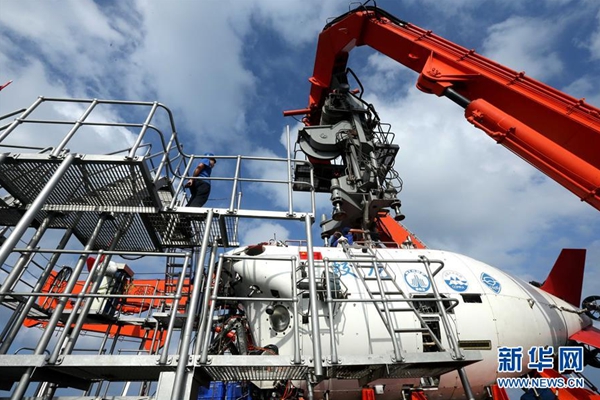An agricultural revolution?
One of the drivers of growth and prosperity in eighteenth century England was agricultural advance. Farmers threw capital and technology at the problem of farming. Larger farms were created. Threshing, hoeing and seed drilling were done by newly developed machines. Crop rotations and selective breeding led to big advances in agricultural output.
Today we stand on the threshold of another possible agrarian revolution. The coming of the intelligent tractor with wide arms for spraying, and capabilities for ploughing, preparing, seeding and tending the crop is transforming quality of output as well as changing the demand for labour. Drones offer less intrusive ways of watering and spraying selectively as problems and shortages are detected in parts of a field or crop. Raising animals is becoming more science based, with better information about their health and well being informing choices for their care.
The UK has a great opportunity to grow its agriculture as we come out of the CAP. The main parties are all ready to continue with subsidy. The government has promised to carry on with the subsidies farmers were expecting from Brussels this decade.
Some argue the main aim of subsidy should be to remunerate farmers for their role as landscape gardeners on a grand scale. Much of the EU system now is designed to reward environmental work, giving subsidy for keeping land fallow or for nurturing certain types of landscape or nature reserve on or near farmland. The Swiss system out of the EU is about keeping the unique Swiss mountain landscapes, as an adjunct to tourism and hospitality which feed off the views.
Some argue the main aim should be about food production. Farmers could be rewarded for cutting imports and producing more of the types of food we need and can grow at home. The EU system used to be more completely based on such an approach.. The policy was born of post war angst in memory of the dreadful shortages of food that occurred during and in the aftermath of the 2nd world war. Later the EU system evolved to take environmental considerations much more into account.
Do we think current EU policy is well judged? How do farmers want the UK government to develop its own agriculture policy, safe in the knowledge that there is no present threat to the subsidies farmers receive? There is a big opportunity to grow more at home for the home market, and to invest more in the new husbandry that will raise productivity.
True needs-based funding for Australia’s schools
The Turnbull Government will introduce real needs-based school funding, and increase investment as part of a new initiative that will give Australian students the quality education they deserve.
The Government will commit an additional $18.6 billion for Australia’s schools over the next decade, starting from 2018. It will be distributed according to a model of fair, needs-based and transparent funding. This investment will be tied to school reforms which are proven to boost student results.
Under the landmark Quality Schools reforms, Commonwealth funding for Australian schools will grow from a record $17.5 billion in 2017 to $30.6 billion in 2027. This includes more than $2.2 billion in new funding over the first four years to be included in this year’s Budget following on from an additional $1.2 billion in last year’s Budget.
While a strong level of funding for schools is vital, what’s more important is how that funding is used.
David Gonski AC has agreed to lead a new inquiry into improving the results of Australian students.
The Review to Achieve Educational Excellence in Australian Schools will provide advice on how this extra Commonwealth funding should be used by Australian schools to improve student achievement and school performance. Mr Gonski will be joined by Dr Ken Boston AO, who was also a member of the original Gonski review.
The review will make recommendations on the most effective teaching and learning strategies to reverse declining results, and seek to raise the performance of schools and students.
Mr Gonski will provide his final report to the Government no later than December 2017, ahead of the negotiation of new school reform agreements with states and territories in the first half of 2018.
Each child in Australia deserves the support and the opportunity to succeed. They deserve schools that are well and fairly funded and encourage the highest academic standards.
The Turnbull Government will deliver the real ‘Gonski’ needs-based funding model that Labor didn’t.
We will end Labor’s 27 special deals with states and territories, unions and non-government school leaders. Labor traded away the principles of the ‘Gonski’ report for political expediency.
The Government is acting to right Labor’s wrongs, including where difficult decisions are required. This new package provides equal federal treatment across all states and is about delivering quality schools for all Australian students.
This bold plan will transform Australian schools. It will set Australian students on the path to academic excellence and achieve real needs-based funding for students from all backgrounds, in every town and city, in every region and state, in every classroom.
National and international reports have shown declining performance in Australia’s education system, despite record increases in funding. We cannot accept increased investment and declining results. We must focus on quality to improve education outcomes for all Australian students.
Our changes will ensure all schools and states transition to an equal Commonwealth share of the resource standard in a decade, unlike the 150 years of inequity that current arrangements would entail. The Commonwealth will meet a share of the Gonski recommended Schooling Resource Standard of 20 per cent for government schools – up from 17 per cent this year – and 80 per cent for non-government schools – up from 77 per cent this year.
While maintaining the historic role of the federal government as the majority funder of non-government schools, this will see the Commonwealth continue to increase its share of funding for government schools, which in 2013-14 stood at 13.4 per cent and in 2005-06 was just 8.9 per cent.
Our reform will allow states and territories to be held to account for meeting their share of the standard. To stop cost shifting, states will also be required to at least maintain their real per student funding levels or face a reduction in Commonwealth funding. The latest data shows that in 2014-15, the Commonwealth increased funding for all Australian schools by more than $1 billion while in the same year, four states and territories actually reduced their spending on government schools by as much as $56 million.
We will correct the inequities and inconsistencies in the current schools funding model by:
- Ensuring students with the same need within the same sector attract the same support from the Commonwealth Government regardless of where they live.
- Transitioning all schools to an equitable Commonwealth share of the Schooling Resource Standard by increasing federal funding on average over the next decade to government schools by 94.1 per cent or $6.4 billion and to non-government schools by 62.2 per cent or $6.7 billion.
- Introducing funding fairness. We expect 24 schools in the nation’s highest socio-economic areas will receive a small reduction in per-student funding in 2018.
- For the first time using the Nationally Consistent Collection of Data for Commonwealth funding decisions on students with a disability. This will ensure that need drives funding allocation, and end the different definitions of disability that exist between jurisdictions.
- From 2021, indexing the SRS at a rate that reflects real cost growth into the future.
The Turnbull Government’s Quality Schools reforms will set current and future generations up for the future, and deliver fair, needs-based funding for all Australian students.
Full details of the Turnbull Government’s Quality Schools reform package are available at the Quality Schools webpage.
Turnbull Government to Build Western Sydney Airport
The Turnbull Government today confirmed that it will build Western Sydney Airport.
Details of the Turnbull Government’s plan to build Western Sydney Airport will be announced by the Treasurer in the Budget next week.
This follows today’s announcement by Sydney Airport Group, the owner of Kingsford Smith Airport, that it will not take up the opportunity under its ‘right of first refusal’ to build and operate the new Western Sydney Airport at Badgerys Creek.
It is a vitally important project for Western Sydney, for Sydney, and the nation, which is why the Coalition Government ended decades of indecision by committing to the project in 2014.
The Government has worked carefully to meet our obligations and we have been planning for either contingency – acceptance or rejection by Sydney Airport Group. We are well positioned to move forward on terms that are consistent with the terms of the Notice of Intention.
The airport will be a major catalyst for jobs and economic growth in Western Sydney, injecting more than $1.9 billion into the economy during the construction phase alone. It is expected to deliver 9,000 new jobs to Western Sydney by the early 2030s, and 60,000 in the long-term.
Consultation meetings with Sydney Airport Group were conducted in an atmosphere of good faith.
Submersible Jiaolong completes 4th dive in S. China Sea
|
|
|
Chinese submersible Jiaolong completed four dives in the South China Sea within five days. [Photo/Xinhua] |
Jiaolong, China’s manned submersible, conducted its fourth dive Sunday around the Zhenbei Seamount in the South China Sea.
Jiaolong stayed underwater for eight hours in its fourth dive in the second stage of China’s 38th ocean scientific expedition, which will last until May 13, authorities said Monday.
The maximum depth of the dive was 1,101 meters beneath the sea surface, where it retrieved a number of basalt samples.
In the meantime, it collected a 0.7-kilogram sample of foraminifer grit at the depth of 630 meters, and brought back samples of sediments and seawater near the seabed as well as high-definition photos and video footages.
“We have also caught sight of corals, sea lilies, anemones, and large fishes like sharks above 420 meters,” said Yang Gang, a senior engineer on board the submersible. Yang said that the new discoveries could shed new light on the study of the South China Sea’s formation and evolution, biodiversity, and the cause of the seamount chain in the area.
Instead of using trawling as a sampling method, Jiaolong is able to conduct refined sampling mission and obtain ample samples, said Shi Xuefa, a researcher with the State Oceanic Administration.
Jiaolong has completed four dives in the South China Sea within five days. The submersible has went through full maintenance on Monday, including its propelling and electrical systems.
“The 38th ocean scientific expedition will be the furthest and longest voyage for Jiaolong in terms of distance and time,” said Wu Changbin, general commander of the second stage of the expedition. “Jiaolong will also complete the largest number of tasks since its operation.”
The 38th oceanic scientific expedition started on Feb. 6. Jiaolong completed a dive in the northwestern Indian Ocean earlier this year in the mission’s first stage. It will also conduct surveys in the Yap Trench and the Mariana Trench in the third stage.
Named after a mythical dragon, Jiaolong reached its deepest depth of 7,062 meters in the Mariana Trench in June 2012.

